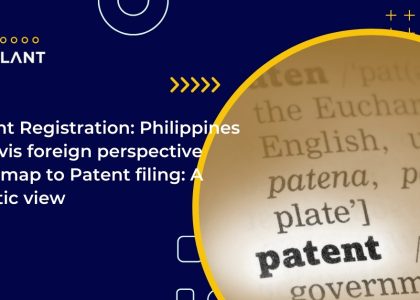The patent of addition protects the improvement or modification
A patent is an exclusive right to protect innovations that include an innovative step and can be used commercially. Getting and issuing a patent typically takes a long time, and it is sometimes stated that these administrative procedures significantly shorten the actual life cycle of a patent by consuming a significant portion of its life. During securing a patent, it may so happen that the inventor obtains a better result by altering some specific aspects of the invention. The inventor may benefit by saving time and avoiding the drawn-out process of re-filing by making these changes or modest revisions to the existing Patent Application. Many national legal systems that govern patents, including those in the United States, Australia, New Zealand, South Africa, and Greece, contain this clause.
Patent of Addition: Meaning and Significance
A patent broken down into smaller portions is called a patent of addition. A weapon that protects products or processes and their improvements and versions is referred to as an addition patent. It accomplishes a useful goal in that it covers a variety of improvements or changes that weren’t included in the original patent but were later improved or updated. Most of the time, changes or additions are implemented in response to consumer feedback. Additionally, depending on the invention’s nature, it can be standard procedure for the inventor to make updates, additions, and other changes over time. For the sake of safeguarding and protecting anything that is added later and is not covered by the original invention in such circumstances, the patent of addition is crucial.
After a patent application has already been filed or issued, adjustments or improvements made to the invention that is both inventive and industrially useful are protected by a patent of addition. Innovations built on current knowledge and new technological breakthroughs are more valuable than existing products. If the improvement or change is inventive in and of itself, a patent of addition can easily be changed into a conventional patent.
It’s also important to remember that there are no additional costs associated with applying for a patent of addition and that the improvement or modification that qualifies must be more substantial than a workshop improvement. The fact that a patent of addition cannot live longer than a conventional patent supports each of these advantages.
Patent of Addition or the Continuation-in-Part Application
To put it simply, a patent of addition is a patent prototype. It is typically a weapon that safeguards the process or product and any upgrades or modifications. These enhancements or modifications are typically not included in the main application. Still, they are brought to the examiner’s notice so they can be expanded and given the same protection as a consequence of ongoing experimentation, study, or market feedback. This is referred to as the Patent of Addition in India, Australia, and New Zealand; the Continuation-in-Part in the USA. While there are some parallels between them, there are also some glaring distinctions.
Patent Cooperation Treaty (PCT): The PCT defines the term “application” in Article 2. An application is a request to have an invention protected, and the term “application” includes requests for utility models, inventors’ certificates, utility certificates, patents, or certificates of addition. It also includes requests for utility and inventors’ certificates of addition. As the necessity to assist the same was envisioned and specified in the Treaty, there is no disagreement in embracing the provision. Therefore, as a result of such inclusion within the Treaty, in principle, if an applicant wants an international application to be treated as a patent of addition or continuation-in-part in the designated state, the said inventor may indicate the intention in the request for national phase entry.
The Practice in the USA: A “Continuation-in-Part” is regarded as a revision or enhancement of an already filed patent application. The phrase “add-on” to the primary patent application is commonly used to describe it. The continuation-in-part application, like the patent of addition, benefits the applicant because it allows for some degree of flexibility to be altered in the application. Claiming the original application’s subject matter and the benefit of claiming the original patent application’s filing date are both advantageous. The drawback of submitting a continuation-in-part application is that because the application’s lifetime is measured from the preceding applications backdate, the period before the patent matures is shortened.
The Practice in the European Union: The European Patent Convention does not provide a provision for patent of addition in the EU. However, certain Member States within Europe have made such allowance for embracing the said position. Countries like Austria, Turkey, and Greece can be counted as a few exceptions to the vast majority of nations that do not provide for ”Patent of Addition.”
Difference between Continuation-in-Part and Patent of Addition
| Continuation-in-Part | Patent of Addition |
| It can be filed at any time before the grant of the parent patent. | It can be filed any time before the lapse of the patent term. |
| The renewal fee of the patent has to be separately paid. | There is no separate renewal fee paid for the patent of addition unless the parent patent application is revoked. |
| The continuation-in-part application may have different priority dates than the parent application. | The date of filing a patent of addition can be either the same or later than the parent application but cannot be before the parent application. |
Conclusion
Protecting products or procedures, as well as their modifications and enhancements, can benefit from patent addition. These will help cover enhancements and adjustments that weren’t covered by the first patent. Additionally, patents for additions offer a valuable route by which such enhancements/changes may still be protected in cases where strong objections are presented that they lack inventive steps in light of the principal invention. The patentee is not even required to pay a renewal fee for these additional patents. The restriction counters these benefits that an additional patent’s duration cannot exceed that of the original patent. Once more, this strategy appears to be another Act-mandated device to stop the “evergreening” of closely related inventions.








